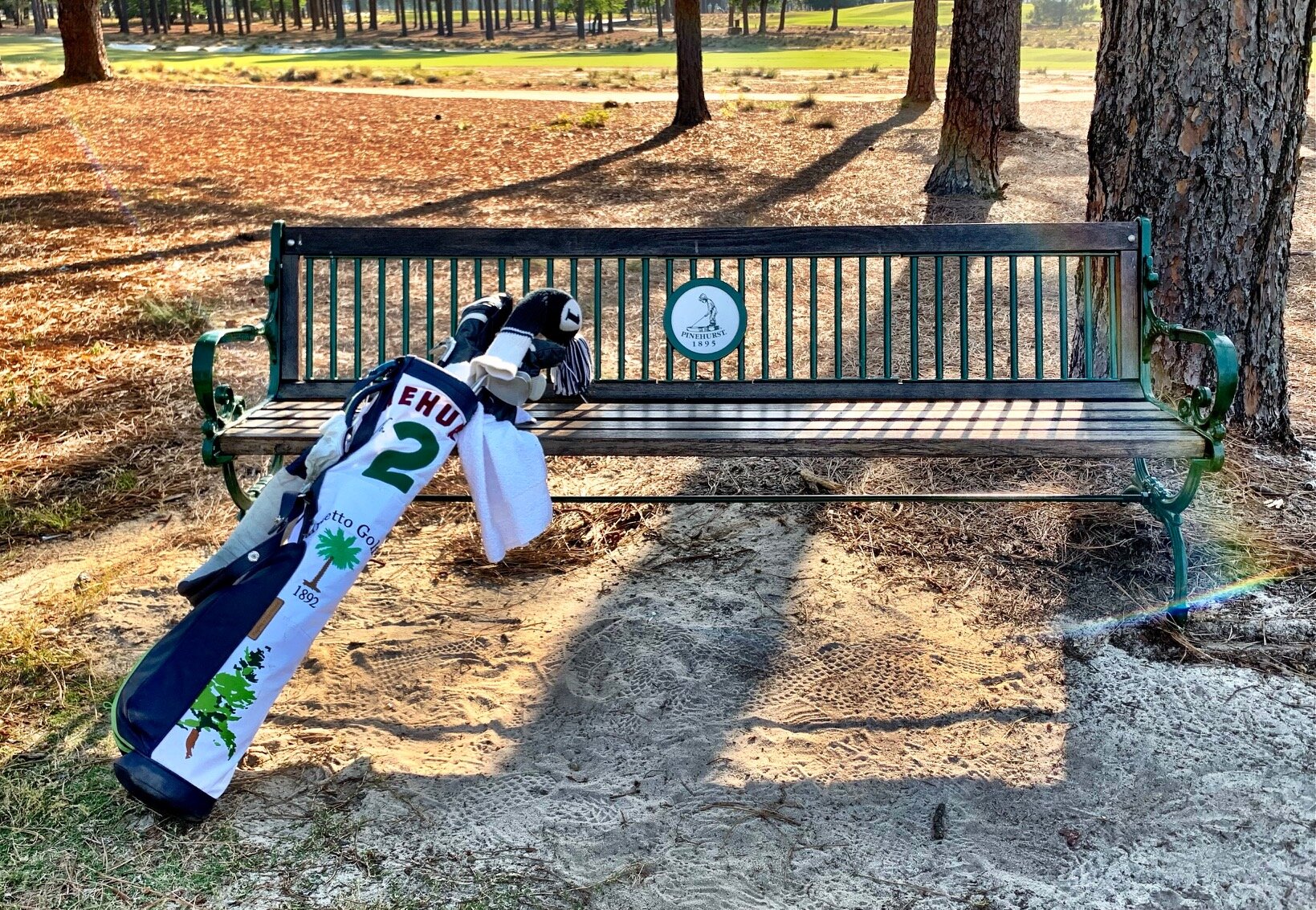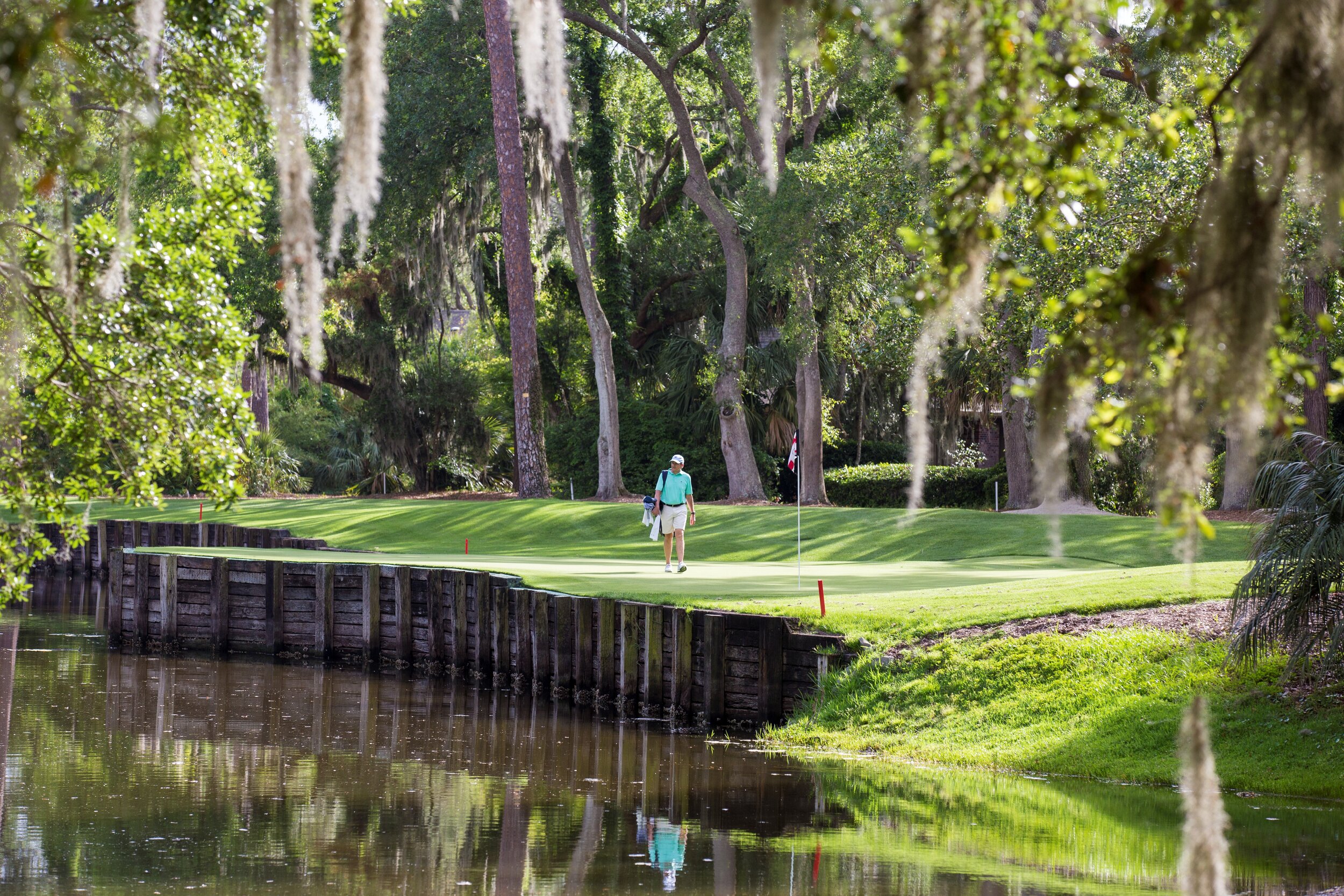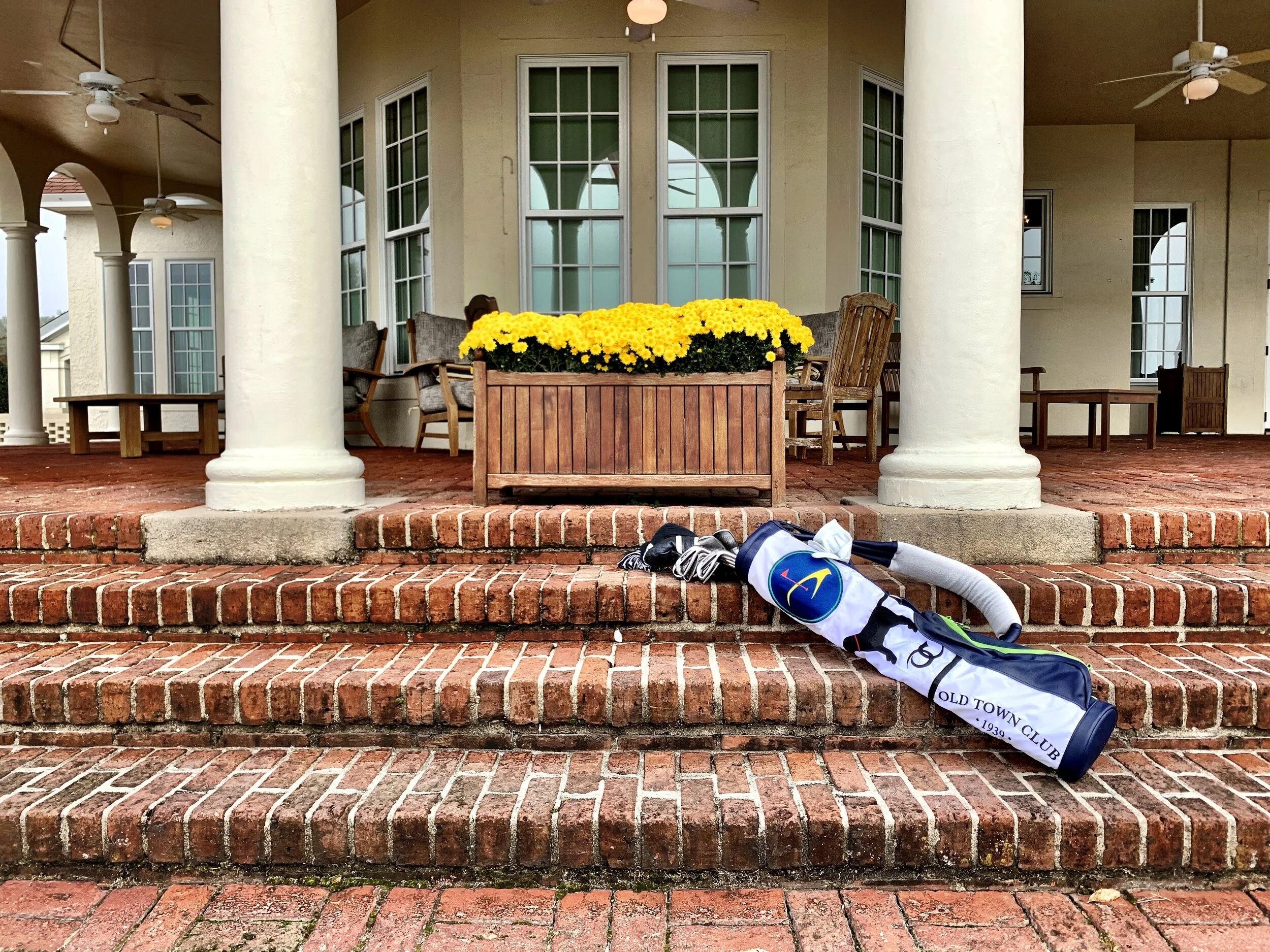







"Good Walks" traces the healthy golf walking culture from the mountains to the Sandhills to the coast and is available wherever books are sold.
I flirted with golf through my first twenty-one years growing up in Hendersonville, North Carolina, and matriculating at the University of North Carolina, but it was not until taking a physical education class in the sport my last semester in Chapel Hill in 1979 that I gave serious thought to pursuing the game with any degree of consistency, passion and focus. My first job was with the Asheville Citizen-Times, and with working mostly evenings for a morning newspaper, I had my days free.
It’s a 23-mile drive along U.S. Highway 64 on an east-west axis between the towns of Lake Toxaway and Highland in the far western corner of North Carolina. This patch of waterfalls and thick green foliage of rhododendron and laurel is commonly referred to as the Highlands Plateau. It’s thick with outstanding golf clubs, with some 13 courses along the way, among the most notable the Donald Ross-designed Highlands Country Club (1928) and Tom Fazio-designed Wade Hampton Golf Club in Cashiers (1987).
Yogi Berra once moaned of his balky touch on the greens at Pinehurst, “I got a touch like a blacksmith.”
Seve Ballesteros was once asked how he four-putted: “I miss, I miss, I miss, I make,” he answered.
Ben Hogan thought putts should count less than a full shot, given that in his mind putting and hitting shots were two totally different endeavors. “Frankly, most of the best golfers I know legitimately hate putting,” the Wee Ice Mon said.
The names Ross and Raynor, MacKenzie and Maxwell roll off the tongues of golf design wonks in the Carolinas with ease and abundance. Not so common are the names Wayne Stiles and John Van Kleek.
Both were landscape architects from the early 1900s who formed a golf course design partnership in 1924, Stiles focusing on courses in his native Massachusetts and New England and Van Kleek operating from an office in St. Petersburg, Florida. Stiles and a prominent Greensboro lawyer, developer and state senator named Alfred M. Scales got together when Scales conceived a residential community four miles west of downtown.
My book on walking some of the sweetest golf courses in the Carolinas is deep into production and is due out in the spring of 2021. To commemorate its launch and provide a fun talking point around its contents, I commissioned the production of a golf bag in the book’s honor.
Three years after walking UNC Finley Golf Course in Chapel Hill with a 9 a.m. tee time on a hot summer day and writing about the experience for the introduction of a book to be published by University of North Carolina Press, I found myself right back where I started. Only on these consecutive Saturdays in July 2020, my tee times were 11:12 a.m. and 12:24 p.m.—square in the teeth of typical summer weather in the South, with temperatures hitting the lower to mid-nineties on twenty-two consecutive days.
During the last week of August I turned over to the editors at University of North Carolina Press my manuscript of 60,000 words and flash drive of several hundred photographs assembled during a two-year period for a book about walking some of the top golf venues in the Carolinas. The idea was to find eighteen courses crossing dimensions from private to resort to municipal that offered outstanding golf and fostered a culture of walking—by lugging, pulling a trolley or taking a caddie.
They are known as push-carts, pull-carts, caddie-carts and trolleys. They are revered in some locales (i.e., the United Kingdom) and sniffed upon at others (many high-brow American clubs). They began as simple devices made of lawn-mower tires mounted on a steel chassis and have evolved into high-tech gadgets powered by batteries and in some models with hands-free remote control.
Through mid-June of 2019, Hayes Holderness had played seventy-eight rounds of golf in five foreign countries, seventy-two of them walking and most of those carrying his bag. In April he became one of the first two players to ever walk and carry his clubs at Santapazienza, a private course an hour outside Sao Paulo, Brazil, designed by Tom Fazio and his son Logan up and down a mountain and through a rainforest. In May he walked in a heat index of 120 degrees in Vietnam and, instead of a standard leather glove, wore rain gloves on both hands to absorb the sweat.
Old Town Club in Winston-Salem was designed and built by Perry Maxwell in the late 1930s, two decades before motorized carts became a blight on the American golf landscape. These grounds were lovingly and reverently restored in 2013 by architect and native son Bill Coore, who would sooner chug kerosene than ride a golf cart. Coore used to walk and play this course frequently during his days at Wake Forest University in the late 1960s, and the more he studied the placement and shapes of the design elements, the more he became fascinated with the art and science of what would in time become his calling.










